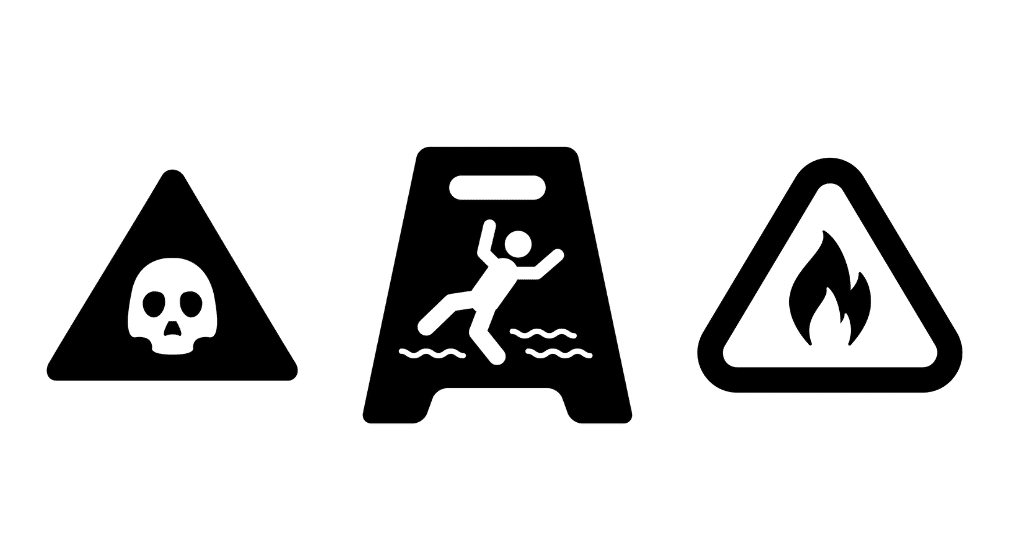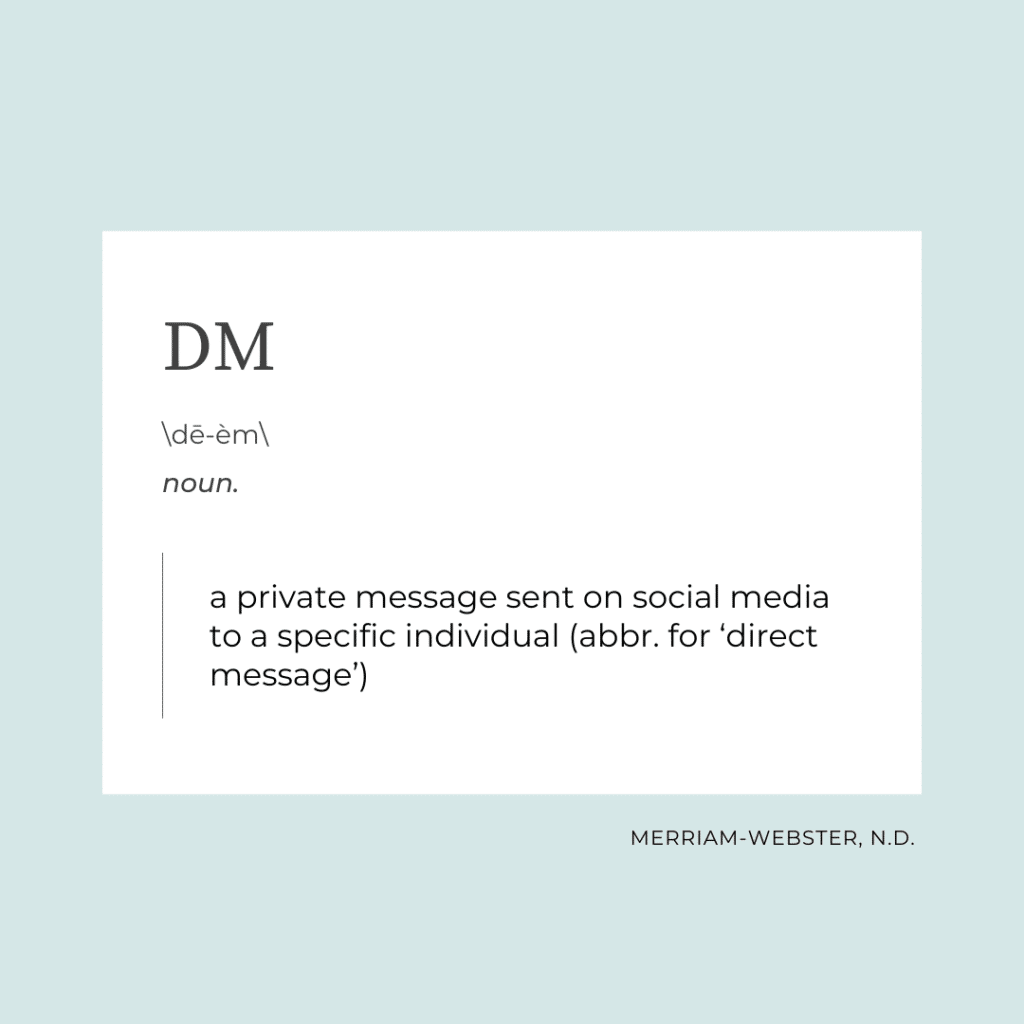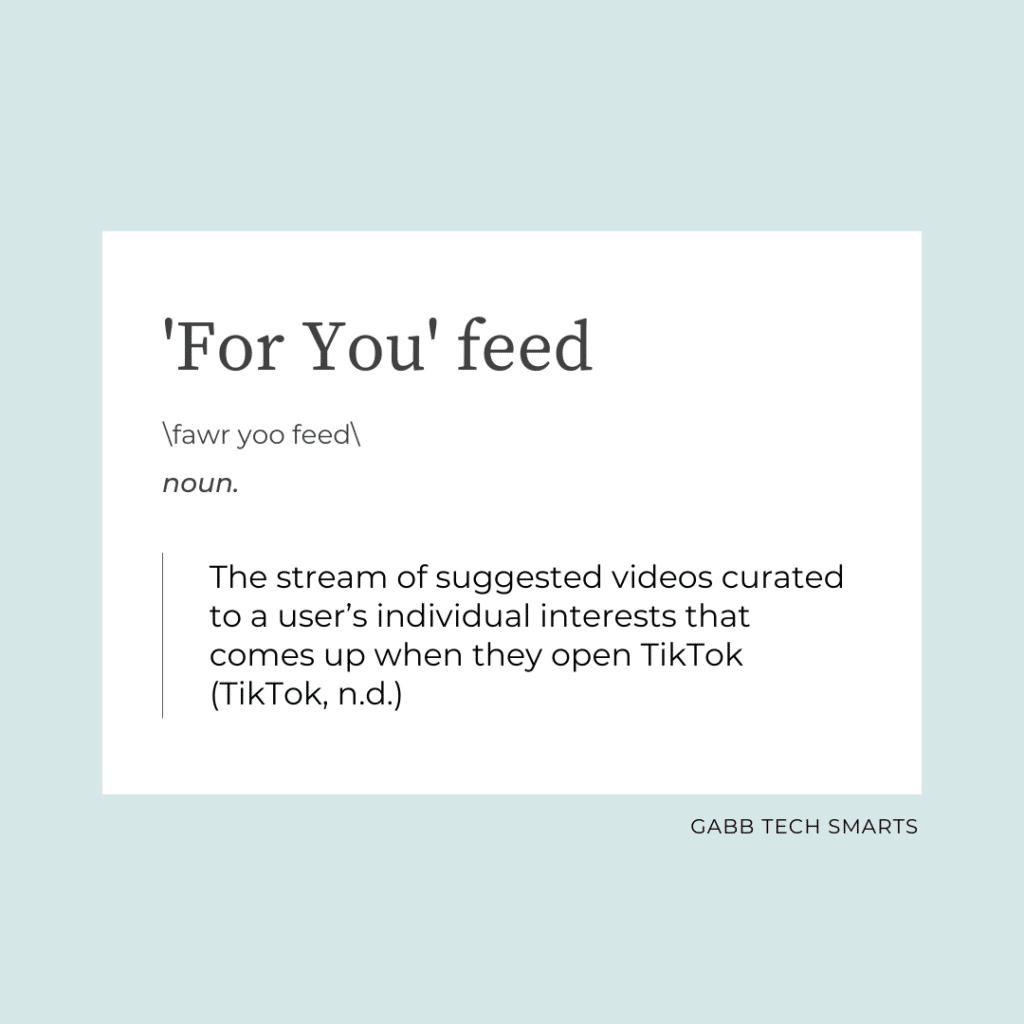TikTok is a fun space where teens can learn, communicate with friends, explore interests, and express individuality. At the same time, many potential TikTok dangers lurk in the app. We don’t have to be afraid. The more we learn about this social media app, the better conversations we can have with our kids about if, when, and how they will interact with this platform.
What Is Dangerous About Tiktok?
Kids are intentionally exposed to explicit and dangerous content on their feed

TikTok is inherently dangerous because it identifies the age of its users and subsequently creates a feed of videos that will harm kids. The Wall Street Journal’s investigative team evaluated the safety claims promised by TikTok when they recently created “dozens of fake accounts registered as 13-15 year-olds (known as ‘bots’). The bots were programmed with interests typical of young teens and were instructed to scroll through TikTok’s ‘For You’ video feeds. TikTok responded by serving them explicit content. Within three days, these accounts were fed a steady stream of 2800 videos featuring drugs, alcohol, eating disorders, and pornography (Barry et al., 2021).
Kids can experience physical and emotional damage from dangerous TikTok challenges
While some TikTok trends are positive, share important events, or encourage healthy living, many put young users at risk. Dangerous trends can cause physical or emotional damage and even jeopardize young people’s lives (Kriegel et al., 2021, p. 171).
Adolescents are very susceptible to the influence of these social media challenges as they seek attention and acceptance from peers in the form of ‘likes.’
—Elana R. Kriegel Research Assistant, Developmental and Behavioral Pediatrics at Northwell Health, 2021

The Fire Challenge
One example of a particularly dangerous trend is the Fire Challenge. In this challenge, users draw shapes on a mirror using flammable fluid, turn off the lights, and film themselves lighting the designs with a match or lighter.
Last year, a 13-year-old from Portland, Oregon, was sent to the ICU after attempting this with her friend. Her family also suffered trauma from seeing the girl on fire and dealing with the accident’s aftermath (Hanson, 2021).
Other High-Risk TikTok Challenges
- The Tide Pod Challenge — Eating tide pods may result in severe chemical burns to the mouth, esophageal, and respiratory
tract.
- The Benadryl Challenge — Overdosing on Benadryl can cause an irregular heartbeat, heart attack, seizure, stroke, brain
damage, or even death.
- The Cinnamon Challenge — Inhaling cinnamon will induce a coughing fit which can result in choking, allergic reactions, aspiration, and lung
damage.
- The Skull Breaker Challenge — Jumping in the air and having your legs kicked out from under you, commonly resulting in broken bones, concussions, traumatic neck, spine, or brain injury, paralysis, and death.
- The Throw-In-The-Air Challenge — Throwing an object (eggs, baseballs, wheelchairs, ladders, etc.) in the air and letting
the object come down on your head, often resulting in concussions, broken bones, traumatic neck, spine, or brain injury,
paralysis, and death.
As researcher Elana Kriegel points out, “Adolescents are very susceptible to these social media challenges as they seek attention and acceptance from peers in the form of ‘likes’.” This desire, combined with still-developing brains, makes teens more likely to ignore the risks of these challenges (Kriegel et al., 2021, p. 172).


Kids can be identified and contacted by predators through TikTok
Predators use TikTok to contact children through DM’s (direct, private messages) and then groom and exploit them. They look for pictures that identify where young people live and target children who appear to be needy. Even a video with the house number in the background puts kids at risk. You can learn how to set a TikTok account to private here.
It’s alarming that the TikTok network is referred to as a “child pornography platform” (Jaffar, 2019, p. 190). Parents and children can take action once they recognize the dangers. Protection begins by discussing with our children why we have set the account to private and how this can prevent predators from identifying their videos, collecting personal information, and sending them a DM on the app.
We can look at examples of photos and reels that show identifying information. We can explain how provocative content, even when imitating a celebrity or pop star, makes us more likely to be targeted by sexual predators. The more real we can be with our children, the better they can protect themselves.

Kids who don’t fit the TikTok ideal can suffer from poor mental health
Feeling accepted is a normal struggle for our youth. However, TikTok doesn’t make it any easier by featuring popular users who are young, disproportionately white, wealthy, and attractive. Content featuring women and girls who are objectified and over-sexualized receives more promotion and attention, perpetuating the damage. TikTok intentionally suppresses posts by users who appear different—“abnormal,” “ugly,” (indicating wrinkles or obesity), or “slummy” (Kennedy, 2020, p. 1072).
When kids open up their ‘For You’ feed, they see a distorted view of what they should look like and how they should act. Even when TikTok stars are quirky or silly, their choreographed mistakes, messy hair, and goofy facial expressions still look good (Kennedy, 2020).

Kids can be misled and deceived on TikTok
TikTok users can generally say whatever they want, often stating opinions as fact or intentionally posting misinformation. While this isn’t unique to TikTok, the app has received negative attention because of its popularity with youth and the risk this poses to them.
TikTok doesn’t screen videos based on truth. A video that sounds legitimate can still get likes—increasing the number of people who see it. Research shows that misinformation on TikTok is sometimes more commonly presented than the truth. This trend holds true for issues ranging from vaping, skincare, prostate cancer, and the Covid-19 pandemic, to name a few (Basch et al., 2021; Fera et al., 2021; Xu et al., 2021; Chen et al., 2021).
Why Do Kids Love Tiktok?
TikTok isn’t just a fun escape. Kids are eager to explore TikTok because it’s where they like to connect with friends, find others who share their interests, and build an online identity (Jerasa & Boffone, 2021, p. 220). Teens used to do this face-to-face, but now they connect more often in online spaces—particularly TikTok.
It’s hard for kids to go TikTok-free because they feel excluded from the social loop. Furthermore, popular trends and slang change weekly and even daily. This can make it hard to join in conversations and understand references to what’s popular on the platform.
This puts a lot of pressure on parents. Do we protect them or allow them to connect with their friends on a risky platform? We can consider many options and boundaries. A conversation about TikTok or Not can give us the chance to encourage kids to let their friends know that they want to be included and will need a phone call or a text. It’s such an important skill to let others know what we need, and this could be a silver lining to the TikTok or Not conversation.
TikTok or Not? This conversation gives families a chance to encourage kids to let their friends know they want to be included with a call or text. It’s an important skill to let others know what we need, and this can be a silver lining to this tough conversation.
Is Tiktok Safe for Kids?
To keep our kids safe, we may consider setting an age requirement for their access. A child’s maturity and competency in media literacy skills will best let us know if they are ready for TikTok. Every child will have a different mastery of the skills they need to stay safe and maintain healthy attitudes and behaviors.
Open communication and a commitment to ongoing conversations will help kids and their parents know when the time is right. A great place to begin the conversation is to ask kids, “Why do you want TikTok?” We can ask them to think about it for a few days and then get back to us. Their answer will provide an awesome chance to look at motivations and talk about the comparison trap.
Signs a teen may be ready for TikTok:
- Self-awareness
- The ability to understand other’s intentions
- A clear understanding of how actions predict consequences
Joseph South, Chief Learning Officer at the International Society for Technology in Education, suggests having children “pitch” their maturity to us by discussing a few questions (Culatta, 2021, pp. 59-60). Responses will provide excellent learning opportunities and a chance to have really meaningful discussions.
- How can this app help me and harm me?
- How does the app connect me to other people?
- Can I connect with strangers, or can they contact me?
- What kinds of interactions does this app allow?
- How does the app make money?
- How does the app keep me engaged? (Through quality content? Habit-inducing measures?)
- How does this app handle the issue of privacy?
- Does this app make sense for me based on my age, maturity, ability to regulate my use, and my understanding of digital permanence?
- What do experts in medicine and psychology say about the app?
What Can We Do to Keep Kids Safe on TikTok?
If the time is right for a teen to use TikTok, we can help them stay safe by:
- Spending time together interacting on the app and practicing digital literacy skills
- Developing a family media plan and doing our best to follow it
- Learning about TikTok’s parental controls, including Family Pairing Mode
- Ongoing conversations about online safety
- Staying current about the platform’s capabilities and evolution
TikTok is an important place for youth to discover, connect, and grow, but it can be dangerous when users are not prepared. By staying involved, learning parental controls, and communicating regularly about our kids’ digital activities, we can help children stay safe online.
Moving Forward
Chatting with our kids about readiness for TikTok:
- What do we do when we see a TikTok Challenge? How can we know if this challenge is dangerous?
- What should we do when we get a DM from a stranger? How can talking about these issues together help keep us safe?
- How can we know if what we see on TikTok is true or false, real or fake?
- Let’s continue talking about how both of us can be prepared to be safe and healthy when we use TikTok!
References
- Basch, C. H., Meleo-Erwin, Z., Fera, J., Jaime, Y. & Basch, C. E. (2021). A global pandemic in the time of viral memes: COVID-19 vaccine misinformation and disinformation on TikTok. Human Vaccines & Immunotherapeutics 17(8), 2373-2377
- Barry, R., Wells, G., West, J., Stern, J., & French, J. (2021, September 8). How TikTok serves up sex and drug videos to minors. The Wall Street Journal
- Chen, M. K. Y., Garden, F., & Sebaratnam, D. F. (2021). Isotretinoin on TikTok™: misinformation getting under our skin. Clinical & Experimental Dermatology, 46(8), 1606–1607
- Culatta, R. (2021). Digital for good: Raising kids to thrive in an online world. Harvard Business Review Press
- Fera, J., Basch, C. H., Pellicane, A., & Basch, C. E. (2021). Videos with the hashtag #vaping on TikTok and implications for informed decision-making by adolescents: Descriptive study. JMIR Pediatrics & Parenting, 4(4), 1–5
- Hanson, K. (202, June 1). Family says TikTok ‘fire challenge’ led teen to set herself on fire accidentally. Today. https://www.today.com/parents/tiktok-fire-challenge-led-teen-set-self-fire-family-t220433
- Jerasa, S., & Boffone, T. (2021). BookTok 101: TikTok, digital literacies, and out‐of‐school reading practices. Journal of Adolescent & Adult Literacy, 65(3), 219–226
- Kennedy, M. (2020). “If the rise of the TikTok dance and e-girl aesthetic has taught us anything, it’s that teenage girls rule the internet right now”: TikTok celebrity, girls and the Coronavirus crisis. European Journal of Cultural Studies, 23(6), 1069–1076
- Kriegel, E. R., Lazarevic, B., Athanasian, C. E., Milanaik, R. L. (2021). TikTok, Tide Pods and Tiger King: Health implications of trends taking over pediatric populations. Current Opinion in Pediatrics 33(1), 170-177
- Merriam-Webster. (n.d.). DM. In Merriam-Webster.com dictionary. Retrieved February 7, 2022, from https://www.merriam-webster.com/dictionary/DM
- TikTok. (n.d.). What is the ‘For You’ feed? Retrieved February 7, 2020, from https://www.tiktok.com/creators/creator-portal/en-us/tiktok-creation-essentials/whats-the-for-you-page-and-how-do-i-get-there/
- Xu, A. J., Taylor, J., Gao, T., Mihalcea, R., Perez, R. V., & Loeb, S. (2021). TikTok and prostate cancer: Misinformation and quality of information using validated questionnaires. BJU International, 128(4), 435–437









Success!
Your comment has been submitted for review! We will notify you when it has been approved and posted!
Thank you!